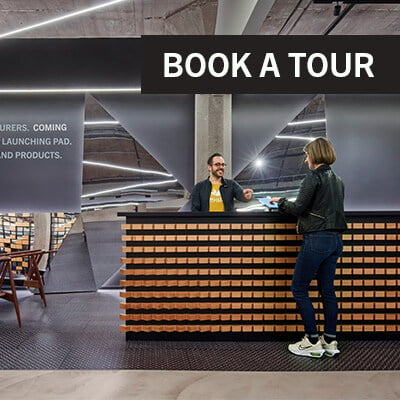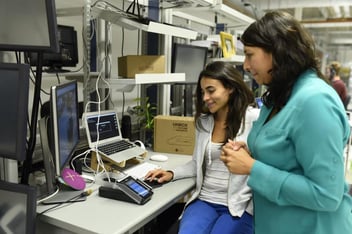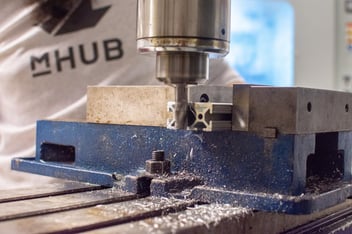Industrial IoT (IIoT) is built on the intersection of operational technology (OT) and information technology (IT) that enables you to connect physical assets to the digital world. IIoT is a critical capability in the business transformation journey: it is the sensory element that captures the status of an asset and communicates it to a computer platform for analysis and decision. It is an important component, but just one element in the IoT – cloud – Artificial Intelligence (AI) trifecta.
Given the huge amount of assets, as well as data points per asset, a strong convergence between IIoT and AI is needed to ingest all that data into intelligent decision systems performing analytics. This convergence will underpin deployment success. Having visibility of all the assets in the production environment through real-time data allows to monitor, analyze, predict and prescribe not just one asset but the full production environment.
During that scaling, multiple assets and other sensorized equipment provide all the data which allows you to build a replica of your physical and process environment in the digital realm--a digital twin. That digital representation provides a very good view of equipment / line / plant and allows you to assess the impact on reality – such as knowing when to perform maintenance, optimize flows in supply chains, predict an incident, and much more. The point of the digital twin is to predict when to act in the real world. It also allows the introduction of new capabilities, new processes, new products, and new business models that you can test out in the virtual world of the digital twin before moving it into the real world.
As pointed out by Gartner, a clear IoT and digital twin governance strategy is necessary as it is the foundation for smart manufacturing and will be here to stay for decades. This encompasses accountability (who owns), who participates (who has what role), predictability (what are expectations) and transparency (understand and engage the right people). Additionally, a data ownership and sharing strategy is needed – investing in a master data management platform is a must.
Since we are solving a business problem, the business owner decides what the timing requirements are for making decisions, what data is valuable and from where that data is originating. Attributes such as ability to connect data and decision points, the integration with existing infrastructure, the speed and latency of data collection, security and autonomy in case of failing connectivity, come before the actual analytics itself. These requirements will determine the data and computing topology for the IIoT solution. Some equipment may need a gateway device to consolidate data and communicate outside of the facility, while other scenarios lend themselves to preprocessing data on an edge device. To keep the architecture future proof, a layered architecture with modular building block is suggested that can easily be updated in the field.
Implementing IIoT solutions is a huge undertaking: it involves several elements from devices over the edge to the cloud, several layers from component over communication and analytics to application, and huge amounts of data. This, therefore, requires highly skilled people in a variety of technology disciplines. However, given the open nature of the IIoT architecture it allows a company to decide which parts they want to implement themselves, to find partners for or from whom to buy. Key, however, is to understand the business and the business problem that needs to be solved – domain knowledge is essential. It is therefore a technical and a business skill play. Finally, and most importantly it requires an open mindset and culture of openness, collaboration and willingness to experiment and learn.






